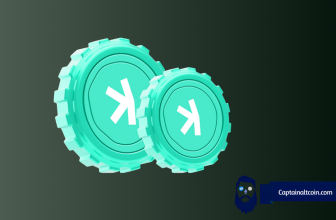
Yes, the whole market tumbled down but Ethereum took heavier hits than most of its competitors which fueled the ETH objectors to resurface with their fists ready to take swings at the fallen giant.
The quote from our title came from the tweeting fingers of Hugo Nguyen, crypto analyst with solid following and reputation on crypto Twitter. He wrote a marathon thread illuminating the flaws and design failures Ethereum suffers in his eyes. The crux of his message is echoing the Greg Maxwell’s thesis of blockchain’s true role: verification rather than computation.
What you'll learn 👉
There are still no valid use cases for Ethereum
As bitsonline wrote back in 2017, sside from ICO fundraising — the legitimacy and practicality of which remains questionable to many — Ethereum has no promising use cases.
Sure, enthusiasts have come up with all kinds of scenarios in which Ethereum could be used to replace or improve the current financial infrastructure. However, most of their theories seem like they would complicate things rather than simplify them.
For a technology to become mainstream, it has to make an aspect of life simpler, not unnecessarily complex.
And when those impractical ideas fail miserably, they become even less useful.
Take the DAO, for example. This 2016 project by Slock.it was a highly complex way of decentralized project funding. Many questioned whether it was necessary, and if it was better than ICOs or traditional VC funding rounds. Then the whole project exploded when a hacker exploited a security vulnerability in the DAO code, and tens of millions of dollars were lost in the fallout.
Eventually, Ethereum developers hard-forked the blockchain to reverse the theft, which literally split the cryptocurrency in two.
Competition is stepping up
Ethereum used to be the only blockchain that had the ability to run smart contracts and host developers running Dapps.
It enjoyed its first-mover advantage in the smart contract sector and it managed to build a brand as the market leader in this segment of the crypto markets.
However, market doesn’t sleep and Ethereum is under an increasing pressure from competing platforms that have learned from Ethereum’s deficiencies and are adapting their networks to meet those needs.
Worthy of mentions in the list of Platform Cryptographic Assets or potential “Ethereum Killers” are EOS, NEO, the Stellar Network, Cardano, and Tezos.
The race is on as these platforms not only possess different levels of technological improvements over their sector front-runner, but also work hard to attract enough developers to their community and secure commercial user adoption of their technology.
The Stellar network (XLM) in particular has risen within this space because of its noteworthy partnerships with organizations like IBM, connecting blockchain based applications to traditional financial systems.
Additionally, Stellar and other platform cryptographic assets like EOS, have offered alternatives to the ‘traditional’ blockchain consensus & governance methods used by Ethereum, providing intuitive solutions to issues like network bottlenecks and infighting surrounding network updates.
Price roll down
Anyone in their right mind is boggled with the logic behind Ethereum’s price pogrom, who would sell an asset that was worth $1400 at one time for the ten times lower yield now?
Many theories, little evidence for anything. Let’s examine couple of them.
- Conspiracy theories always find their place in the crypto space, you can explain a lot with them. One of the most popular ones is that big banks stand behind this unrelenting selling pressure as they want to stomp bitcoin and end the whole story around it.
- Another one, pertinent to ETH is that this demise is caused by ICO teams who are now selling the proceedings of their token sales, committing a “soft exit scam” as they become aware of how difficult it is to implement what they set out in their whitepapers. Second possible reason for ICOs to unload their ETH is to have the funds ready once SEC comes knocking on the doors with their fines for non-compliant and unregistered asset sales. This is, however, unlikely and pretty much debunked by TheBlock. ICOs hold around 3.57 million ETH in their wallets which makes 3.5% of the total ether supply. The sell off of the ethers ICOs hold is still not happening – they only sold around 2% of the holdings in the last 2 months, 64% in aggregate. It appears that many teams were responsible with the money and are still liquid and operational without having to use the treasury funds.
- Perhaps some believers are starting to lose faith and want to cut their losses? That is also a possibility as the adoption rate of any crypto project is almost non-existent and some people are just impatient and can’t take it anymore.
- People who never cared about anything but getting rich quick with little to no effort. Although most of them are already gone by now, last factions are still only now jumping the ship.







